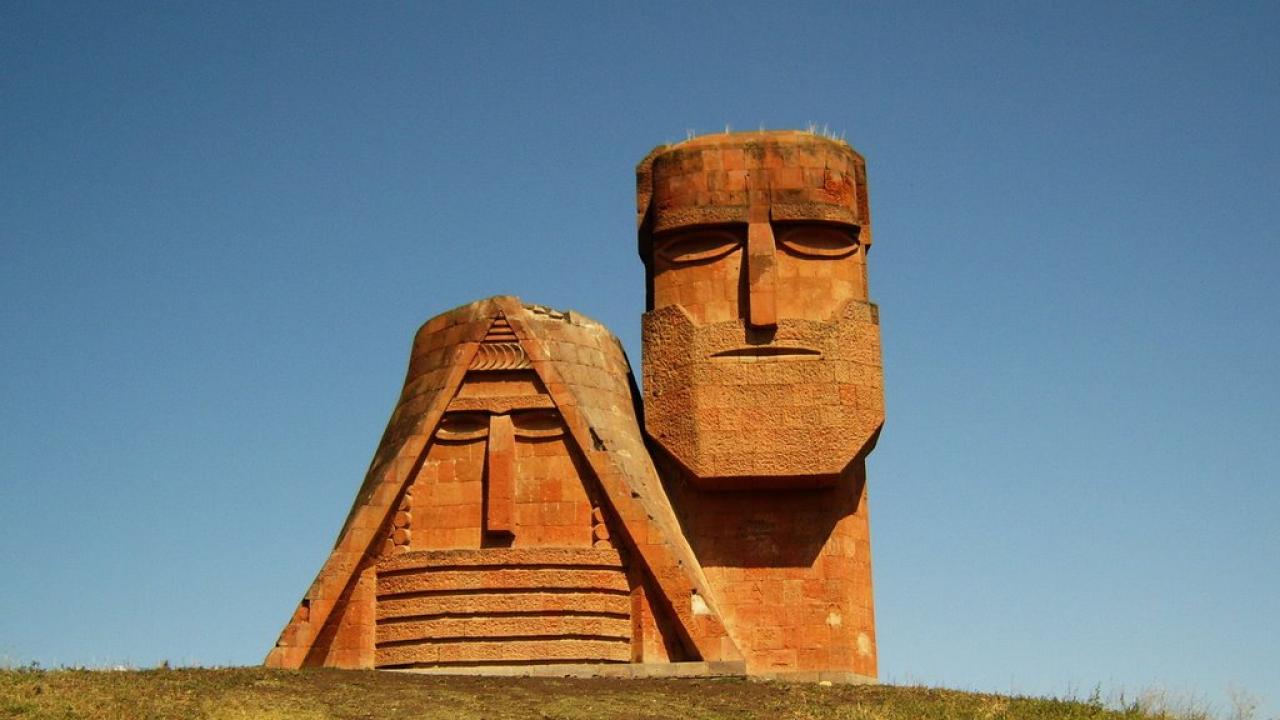
The second Armenian state - Artsakh (Nagorno-Karabakh Republic) is an inalienable part of
historical Armenia. Mentions of it go back to the IX-VI centuries BC, the era of Urartu. As a part
of historical Armenia, Artsakh was mentioned in the works of Plutarch, Claudius Ptolemy, Dion
Cassius and other ancient historians and chroniclers.
During the Soviet period, Karabakh received the status of an autonomous region within the
Azerbaijani SSR, and only at the end of 1991 through a referendum Artsakh was proclaimed an
independent Nagorno-Karabakh Republic.
Artsakh is located in the eastern part of the Armenian Highland, its nature is remarkable for the
breathtaking beauty. In this small piece of Armenian land a huge number of cultural and
historical monuments, natural masterpieces, attracting tourists from all over the world, are
concentrated. In the period of the Soviet Union, NKR was called "the center of the long-livers of
the planet".
During the liberation war in Karabakh, many Armenian churches were destroyed, some of which
were restored after the war.
Already in 2015, Karabakh was recognized by the Guardian as one of the best countries for
adventure holidays. The publication noted that NKR has many advantages, and even "despite
the unresolved conflict, the region evokes a keen interest among tourists: archaeological
monuments, mountain monasteries, ancient caves and areas with exceptional natural beauty".
The PolitRUS edition wrote about Artsakh the following: "Artsakh is rightfully called the
Caucasian Switzerland. The heavily indented mountain relief predetermines a unique and
amazing nature: steep wooded mountain ranges alternating with deep canyons, gorges with
raging mountain streams, alpine meadows, mysterious caves, picturesque lakes. The
mountains here are unique, fantastic, fascinating and captivating with endless variety and
versatility".
In Artsakh, such directions as ecotourism, ethnic, mountainous, extreme, aerial, military-
historical, hiking tourism are developed highly. The development of tourism is also promoted by
the popularization and spread of folk customs and traditions. Annually, there are various
festivals, attracting tourists from Armenia and abroad, are held. Among them: Silkworm festival,
Artsakh wine festival, donkey races, Vardavar festival, etc. Many summer camps and rest
houses are organized in the republic.
The capital of Artsakh, Stepanakert, is an example of a harmonious intertwining of eastern and
western architecture. In the early 90's, Stepanakert was regularly subjected to artillery fire from
Shushi, which was controlled by Azerbaijanis then. However, after the liberation, the city was
rebuilt anew and now nothing reminds of the tragic events of those years. Stepanakert, with its
50 000 inhabitants, currently is a dynamically developing city with picturesque squares and
parks, museums, theaters, libraries and hotels, stadiums and various secondary and higher
educational institutions.
One of the Artsakh capital wonderful sights is the Church of St. Hakob, as well as many ancient
buildings in the city that can tell about the rich and complex history and culture of Artsakh.